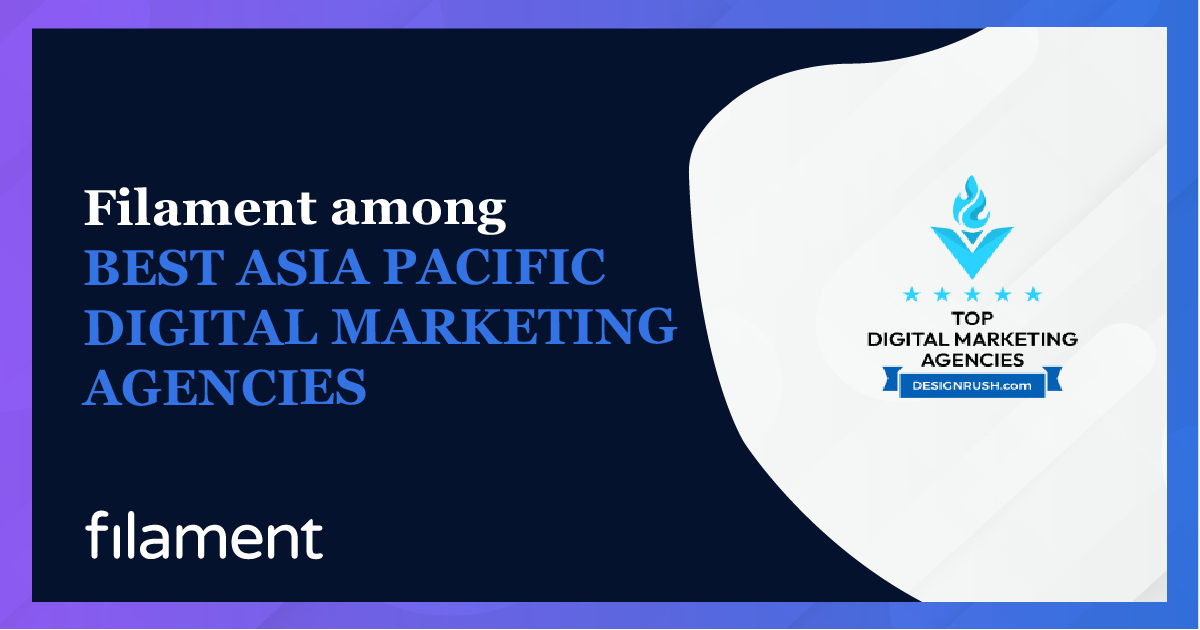How to Build a Buyer Persona: Get Laser-Focussed With Your Marketing Targeting
Knowing who your customer is and wrapping your whole brand and business around that customer’s needs and wants is incredibly powerful. We call this a buyer persona.

Buyer personas can transform your digital marketing by guiding how you do marketing and in what context. Buyer personas also have the power to shape decision making across your business as leaders and managers are guided by what the customer wants.
The following article outlines what buyer personas are, what they are not, and how they are used. Most importantly, this article shows how to build buyer personas for your business.
Armed with this information, you’ll be enable you to target the right lead acquisition channels, discover Marketing Qualified Leads (MQLs), nurture Sales Qualified Leads (SQLs) and convert customers to support your growth strategy with targeted lead generation into the future.
What Is a Buyer Persona?
A buyer persona is a fictional, generalised representations of your ideal customers.
They help you understand your customers (and prospective customers) better, and make it easier for you to tailor content to the specific needs, behaviours, and concerns of different groups. The strongest buyer personas are based on market research as well as on insights you gather from your actual customer base (through surveys, interviews, etc.).
“Personas are useful in considering the goals, desires, and limitations of brand buyers and users in order to help to guide decisions about a service, product or interaction space such as features, interactions, and visual design of a website.” (Source)
What is a bad fit persona?
Where a buyer persona is a representation of an ideal customer, a ‘bad fit’ persona is a representation of who you don’t want as a customer.
‘Bad fit’ personas could include, for example:
- Students who are only engaging with your content for research/knowledge, or
- Prospects who will be too expensive to acquire; or
- Potential customers who will be too costly or time consuming to service effectively and efficiently.
How Should You Use a Buyer Persona?
At the most basic level, personas allow you to personalise or target your marketing for different segments of your audience. For example, instead of sending the same lead nurturing emails to everyone in your database, you can segment by buyer persona and tailor your messaging according to what you know about those different personas.
If you take the time to create ‘bad fit’ personas, you’ll have the added advantage of being able to segment out the “bad apples” from the rest of your contacts, which can help you achieve a lower Cost per Lead (CPL) and Cost per Sale (CPS) (and see higher sales productivity).
When combined with sales cycle stages, i.e. how far along someone is in your sales cycle, buyer personas also enable you to map out and create highly-targeted content.
Are buyer personas for marketing or for sales?
Your best leads are buyers that match your ideal buyer profile and are active in their buying journey. These prospects face similar challenges and have similar goals to your best customers, and are currently in the market for a solution. It’s far more efficient to reach out only to leads who fit your solution and want it.
That’s why inbound salespeople listen to the market to determine which prospects have recently visited the salesperson’s company website, filled out a form, or opened one of the salesperson’s emails. The ability to define the right business opportunities you’ll spend your time with is the difference between missing or exceeding your sales quota. It also helps you build a predictable, scalable sales funnel.
When you’re laser-focused on the right prospects, you stop wasting time with buyers who are simply poor fits or not yet ready to buy.
What’s the difference between an ideal account or ideal company and a buyer persona?
Ideal account or company buyer profiles define the different buying patterns of the companies and is particularly relevant when engaging in Account-Based Marketing and Sales. Buyer personas, on the other hand, are the fictional, generalised representations of the people in those companies you engage with.
For example, your ideal buyer profile may be health care companies with less than 10,000 employees. Within that ideal buyer profile, you probably engage with multiple buyer personas.
Various roles may be involved in the buying decision at those companies. Perhaps one buyer persona is a leader of the IT department and another is the head of operations. Differentiating between these buyer personas will help you formulate a message that resonates with the goals and challenges they are each uniquely facing.
How do you seamlessly integrate ideal accounts with buyer personas?
Here are six general questions you can ask yourself to identify your ideal buyer profile:
- Are there company sizes that are ideal or not ideal who would buy your product?
- Do you define size as employees, revenue, customers, or another metric?
- Are there industries or verticals that are ideal or not ideal?
- Are there geographic locations that are ideal or not ideal?
- Are B2B customers better than B2C?
- Are there other attributes of that make the buyer ideal or not ideal?
Should leadership teams be aware of a buyer persona?
While buyer personas help marketing shape content to add value to a specific type of customer, getting your leadership and management team involved can have tremendous benefits.
When buyer personas are clear and agreed upon across the management team, broader decision-making can be positively impacted. Business decisions which affect customers across multiple divisions or teams can be made with personas in mind, even if marketing is not immediately affected.
Asking how a persona would want a business outcome to be can provide tremendous guidance and clarity. Leaders can ask themselves how Persona 1 or Persona 2 may have different reactions to a particular customer service message.
Buyer personas can even be relevant at Board level, as broader awareness can strengthen an understanding of exactly whom a company exists for and sells to. Awareness at all levels ensures brand uniformity.
How Do You Build a Buyer Persona?
Buyer personas are created through research, surveys, and interviews of your target audience. That includes a mix of customers, prospects, and those outside of your contact database who might align with your target audience.
Here are some practical methods for gathering the information you need to develop personas:
- Look through your contact database to uncover trends about how certain leads or customers find and consume your content.
- Ask the questions (We’ve included some prompts for you below) to formulate a detailed description of a realistic person when creating personas.
- Interview customers either in person or over the phone to discover what they like about your product or service.
- Take into consideration your sales team’s feedback on the leads they are interacting with most. What types of sales cycles does your sales team work with? What generalizations can they make about the different types of customers you serve best?
- Segment your CRM against any buyer personas. If your CRM has buyer persona tools built into the platform, ensure you structure your descriptions so that you can easily recognise any buyer persona prospects.
- When creating forms to use on your website, use form fields that capture important persona information. For example, if all of your personas vary based on company size, ask each lead for information about company size on your forms. You could also gather information on what forms of social media your leads use by asking a question about social media accounts.
- Create and organise persona data in a way that makes sense to non-marketers. This will unlock reporting capabilities.
What should I ask when building a buyer persona?
If the following questions are answered, a robust buyer persona will come to life.
What is the buyer persona’s role?
- What is your job role? Your job title?
- How is your job measured?
- What is a typical day?
- What skills are required?
- What knowledge and tools do you use?
- Who do you report to? Who reports to you?
What are their goals?
- What are you responsible for?
- What does it mean to be successful in your role?
What are their challenges?
- What are your biggest challenges?
- How do you overcome these challenges?
Where do they work?
- What industry or industries does your company work in?
- What is the size of your company (revenue, employees?)
How do they access information?
- How do you learn about new information for your job?
- What publications or blogs do you read?
- What associations and social networks do you belong to?
What is their personal background?
- Age
- Family (single, married, children)
- Education
What are their buying preferences?
- How to you prefer to interact with vendors (email, phone, in person?)
- Do you use the internet to research vendors or products? If yes, how do you search for information? What types of websites do you use?
What is your perception of our products and services?
Ready to get more targeted with your demand generation with a buyer persona?
If you’re ready to take a strategic approach with defined buyer personas which drive your strategic demand gen initiatives, then we need to talk.





